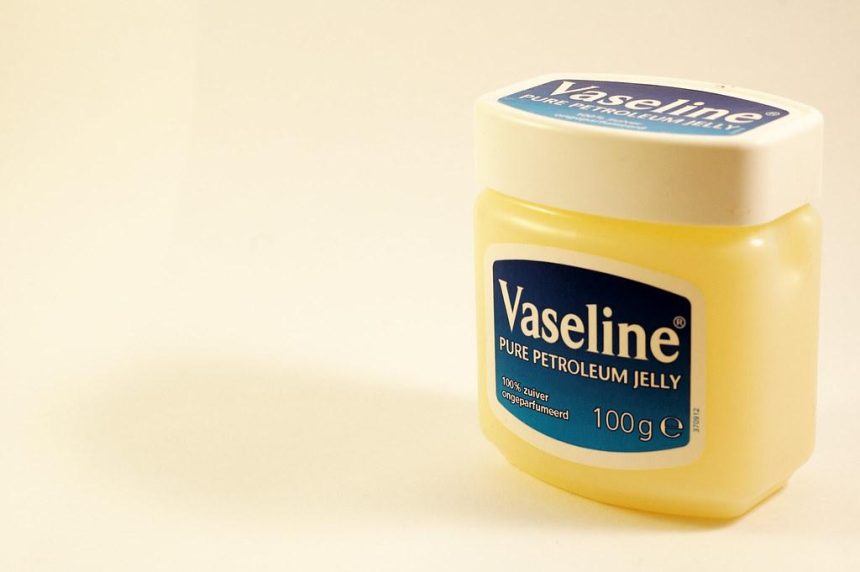Can I Use Regular Vaseline on Baby? Safe Skin Care Tips
When it comes to caring for your baby’s delicate skin, parents often seek simple, effective solutions that offer both protection and peace of mind. With countless products on the market, it’s easy to feel overwhelmed by choices—each promising to soothe, heal, and nourish. One common household staple that often makes its way into conversations about infant skincare is Vaseline, or petroleum jelly. But can you really use regular Vaseline on your baby? Is it safe for their sensitive skin? In this article, we’ll explore the ins and outs of using Vaseline on your little one, providing you with the safe skincare tips you need to make informed decisions and keep your baby’s skin happy and healthy. Join us as we unravel the truth about this versatile ointment and guide you through the world of baby skincare.
Understanding the Benefits of Vaseline for Babys Skin
Vaseline, or petroleum jelly, is often hailed for its remarkable moisturizing properties, making it an excellent option for baby skin care. One of the primary benefits is its ability to create a protective barrier that locks in moisture, which is crucial for maintaining healthy skin. This barrier helps to shield delicate skin against harsh environmental factors, such as cold air and irritants. Additionally, it can provide relief for minor skin irritations and chafing, making it a versatile ally in soothing your little one’s skin.
Moreover, Vaseline is non-comedogenic, meaning it won’t clog pores, an essential factor to consider for sensitive baby skin. Its gentle formulation is devoid of fragrances and additives, significantly reducing the risk of allergic reactions. When incorporating Vaseline into your baby’s skincare routine, consider using it for:
- Dry patches: To combat dryness, especially in colder months.
- Diaper rash: As a preventative layer to protect against moisture and friction.
- Chapped lips: To keep those tender lips hydrated and smooth.
Potential Risks of Using Vaseline on Infants
While Vaseline can be an effective moisturizer for many skin conditions, using it on infants introduces certain risks that parents should carefully consider. One primary concern is occlusion, which occurs when the thick layer of petroleum jelly traps moisture and bacteria against the skin. This can lead to skin irritation or worsen existing conditions such as diaper rash. Furthermore, since babies have delicate skin, the heavy consistency of Vaseline can clog pores and potentially cause breakouts or other skin problems.
Another important factor to note is the possibility of allergic reactions. Though rare, some infants may react adversely to Vaseline, manifesting as redness, swelling, or a rash. It’s essential to conduct a patch test on a small area of the infant’s skin before applying Vaseline more extensively. Always consult your pediatrician, especially if your baby has pre-existing skin conditions or sensitivities. Consider exploring alternatives tailored specifically for infants that provide moisture without the associated risks of conventional petroleum jelly.
Expert Recommendations for Safe Application Techniques
When applying any product to a baby’s sensitive skin, including Vaseline, it’s essential to follow a few expert recommendations to ensure safety and effectiveness. Start by choosing a clean, quiet space for application, minimizing distractions. Before applying, always wash your hands thoroughly, as this helps prevent transferring any unwanted bacteria or irritants to your baby’s skin. Use a small amount of Vaseline, as a little goes a long way; gently dab it on with your fingertips. **Avoid using cotton balls or swabs**, as these can leave behind fibers that may irritate the skin.
Additionally, it’s vital to monitor your baby’s skin for any adverse reactions post-application. Wait for a few hours after applying Vaseline and observe for any redness, bumps, or itchiness. If your baby has a history of skin sensitivities or allergies, consult with a pediatrician before use. To ensure optimal results, apply Vaseline directly after bathing while the skin is still slightly damp; this locks in moisture effectively. Remember, keeping the skin hydrated is key, so use the product sparingly and regularly check for any changes in your baby’s skin condition.
Alternatives to Vaseline for Baby Skin Care
While Vaseline is often considered a go-to for its barrier-protecting qualities, many parents seek alternatives that provide moisture without feeling heavy or greasy. Here are some natural and gentle substitutes that can effectively nurture your baby’s delicate skin:
- Coconut Oil: Rich in fatty acids, it hydrates and protects the skin, making it an excellent choice for moisturizing.
- Shea Butter: Known for its soothing properties, shea butter deeply nourishes and helps in relieving dry patches.
- Jojoba Oil: Similar to the natural oils produced by the skin, jojoba oil absorbs quickly and provides lasting moisture without clogging pores.
- Aloe Vera Gel: Excellent for calming irritated skin, aloe vera also provides hydration while being lightweight and refreshing.
- Olive Oil: Packed with antioxidants, olive oil is great for hydrating and softening the skin.
Choosing the right product for your baby’s skin can be easier with a few key factors in mind. Look for options that are **hypoallergenic** and **free from fragrances, dyes, and harsh chemicals** to minimize the risk of irritation. Here’s a comparison of how these alternatives stack up against Vaseline:
| Product | Moisturizing | Protection | Natural |
|---|---|---|---|
| Vaseline | 🔹 | 🔹🔹🔹 | No |
| Coconut Oil | 🔹🔹🔹 | 🔹 | Yes |
| Shea Butter | 🔹🔹🔹 | 🔹🔹 | Yes |
| Jojoba Oil | 🔹🔹🔹 | 🔹 | Yes |
| Aloe Vera Gel | 🔹🔹 | 🔹 | Yes |
| Olive Oil | 🔹🔹🔹 | 🔹 | Yes |
Q&A
Q&A: Can I Use Regular Vaseline on Baby? Safe Skin Care Tips
Q1: What is Vaseline, and how is it commonly used?
A1: Vaseline, or petroleum jelly, is a popular ointment known for its moisturizing properties. It creates a protective barrier on the skin, helping to lock in moisture and protect against irritants. People often use it for chapped skin, minor cuts, burns, and as a base for other topical treatments.
Q2: Is it safe to use regular Vaseline on babies?
A2: Yes, regular Vaseline is generally considered safe for use on babies. Its hypoallergenic and non-comedogenic properties make it a gentle option, suitable for helping to protect a baby’s sensitive skin from dryness, diaper rash, and chafing.
Q3: Are there any specific situations where I might want to avoid using Vaseline on my baby?
A3: While Vaseline is typically safe, it’s best to avoid using it on open wounds or areas that are oozing. It may trap bacteria or dirt, potentially leading to infection. Always consult with your pediatrician if your baby has any specific skin conditions or if you’re unsure whether to apply it.
Q4: How should I apply Vaseline on my baby?
A4: To apply Vaseline, start with clean hands. Take a small amount and gently rub it between your fingers to warm it up. Apply a thin layer to the desired area, whether it’s dipe rash or dry patches, being careful to avoid covering the entire body. Be gentle and ensure the skin is clean and dry before application.
Q5: Can Vaseline help with diaper rash?
A5: Absolutely! Vaseline creates a protective barrier against moisture, which is crucial in preventing and soothing diaper rash. Applying a thin layer during diaper changes can help keep your baby’s skin healthy and protected from irritation.
Q6: What are some alternatives to Vaseline for baby care?
A6: There are numerous alternatives to Vaseline, such as natural oils (like coconut or olive oil), shea butter, or specially formulated baby ointments. These options may offer similar moisturizing benefits with natural ingredients. Always patch-test any new lotion or cream to avoid allergic reactions.
Q7: Should I consult a doctor before using Vaseline on my baby?
A7: It’s always a good idea to consult your pediatrician if you have any concerns about your baby’s skin care. While Vaseline is safe for most babies, each infant’s skin can react differently, and it’s best to get personalized advice if your baby has any existing skin conditions or sensitivities.
Q8: Any other skin care tips for baby’s sensitive skin?
A8: Yes! Keep the baby’s skin moisturized regularly, especially in dry climates, bathe them in lukewarm water to avoid stripping natural oils, and use gentle, fragrance-free cleansers and detergents. Remember, less is often more with baby skin care—simple, natural products typically work best!
Insights and Conclusions
while Vaseline may seem like a quintessential go-to for many skincare needs, using it on your little one requires careful consideration. As with any product, it’s crucial to weigh the benefits against potential risks. Always prioritize your baby’s delicate skin by consulting with a pediatrician beforehand and opting for formulations designed specifically for infants when possible. Remember, every baby is unique, and what works for one may not work for another. By staying informed and practicing mindful care, you can ensure that your baby’s skin remains healthy, protected, and nurtured. Embrace the journey of parenthood with confidence, knowing that the right choices can make all the difference in your baby’s tender care.


